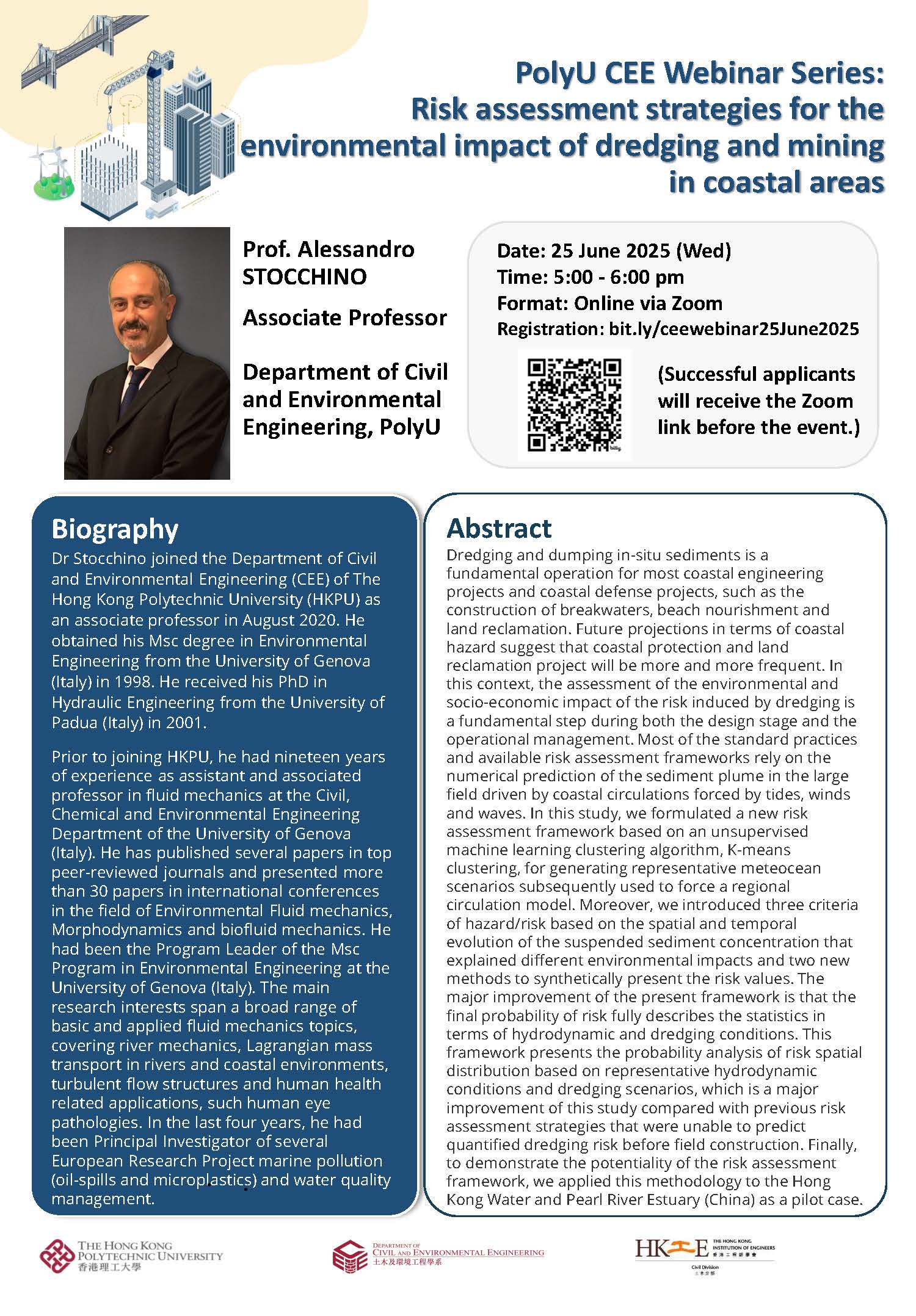Risk assessment strategies for the environmental impact of dredging and mining in coastal areas
Others
-
Date
25 Jun 2025
-
Organiser
CEE / HKIE Civil Division
-
Time
17:00 - 18:00
-
Venue
Online via Webinar
Speaker
Prof. Alessandro STOCCHINO
Enquiry
CHAN, Winnie PK [CEE] winnie.pk.chan@polyu.edu.hk
Summary
Dredging and dumping in-situ sediments is a fundamental operation for most coastal engineering projects and coastal defense projects, such as the construction of breakwaters, beach nourishment and land reclamation. Future projections in terms of coastal hazard suggest that coastal protection and land reclamation project will be more and more frequent. In this context, the assessment of the environmental and socio-economic impact of the risk induced by dredging is a fundamental step during both the design stage and the operational management. Most of the standard practices and available risk assessment frameworks rely on the numerical prediction of the sediment plume in the large field driven by coastal circulations forced by tides, winds and waves. In this study, we formulated a new risk assessment framework based on an unsupervised machine learning clustering algorithm, K-means clustering, for generating representative meteocean scenarios subsequently used to force a regional circulation model. Moreover, we introduced three criteria of hazard/risk based on the spatial and temporal evolution of the suspended sediment concentration that explained different environmental impacts and two new methods to synthetically present the risk values. The major improvement of the present framework is that the final probability of risk fully describes the statistics in terms of hydrodynamic and dredging conditions. This framework presents the probability analysis of risk spatial distribution based on representative hydrodynamic conditions and dredging scenarios, which is a major improvement of this study compared with previous risk assessment strategies that were unable to predict quantified dredging risk before field construction. Finally, to demonstrate the potentiality of the risk assessment framework, we applied this methodology to the Hong Kong Water and Pearl River Estuary (China) as a pilot case.





